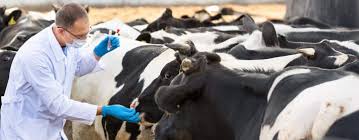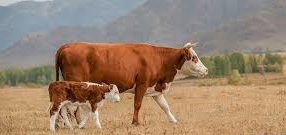There are clear challenges to rapidly increasing agricultural productivity to help feed growing populations without depleting the natural resource base. Biotechnology is seen as a means to address both objectives by tackling the production constraints of small-scale or resource-poor farmers, who contribute more than 70% of the food produced in developing countries.
Modern biological techniques such as molecular cloning of genes, gene transfer, genetic manipulation of animal and plant embryos, genetic manipulation of rumen microbes, chemical and biological treatment of low-quality animal feeds for improved nutritive value, genetically engineered immunodiagnostic and immunoprophylactic agents, and veterinary vaccines, are becoming a reality and are gradually being introduced into research and development programs in developing countries.
Biotechnology offers unprecedented opportunities for increasing agricultural productivity and protecting the environment through reduced use of agrochemicals.
Read Also: Factors Affecting the Decomposition of Organic Matter in Soil
Available Biotechnologies for Enhancing Animal Performance

1. Reproductive Physiology: One of the challenges for genetic improvement is to increase reproduction rates. Several reproduction techniques are available, the most common being artificial insemination (AI), embryo transfer, and associated technologies.
Measurement of progesterone in milk or blood is a widely used technique for monitoring ovarian function and conducting pregnancy tests. This technology plays an important role in managing the reproductive function of animals.
2. Embryo Transfer (ET): Although not economically feasible for commercial use on small farms at present, embryo technology can significantly contribute to research and genetic improvement in local breeds. The principal benefit of embryo transfer is the ability to produce several progeny from a female, just as AI can produce many offspring from one male.
3. Embryo Sexing and Cloning: Embryo sexing, although it may not dramatically affect rates of genetic gain, can considerably improve efficiency. If multiple sexed-embryo transfer becomes as routine an operation as AI, beef operations based on this system could compete with pig and poultry production in terms of feed utilization efficiency.
4. Hormone Use: Hormonal assays used to monitor reproductive function can be beneficial for both research and commercial livestock operations. Reproduction can also be manipulated using hormonal treatments, which can be advantageous in controlling breeding cycles.
5. Animal Genetics and Breeding: Genetic improvement in livestock depends on access to genetic variation and effective methods for exploiting this variation. Genetic diversity serves as a buffer against changes in the environment and plays a critical role in breeding livestock for adaptability and production across a range of environments.
6. Multiple Ovulation Embryo Transfer (MOET) and Open Nucleus Breeding System: MOET is a composite technology that includes superovulation, fertilization, embryo recovery, short-term in vitro culture of embryos, embryo freezing, and embryo transfer.
The benefits of MOET include the production of more offspring from valuable females, increasing the population base of rare or endangered breeds, ex-situ preservation of endangered populations, progeny testing of females, and accelerating genetic improvement in breeding programs.
7. Genetic Markers and Marker-Assisted Selection: A genetic marker for a trait is a DNA segment associated with the trait, facilitating the tagging of individual genes or chromosome segments that influence the trait of interest.
The availability of many such markers increases the chances of detecting major genes that influence quantitative traits. Marker identification and use are expected to enhance future breeding prospects for traits such as disease resistance and tolerance to environmental stresses.
8. Nutrition and Feed Utilization:
Gene-based technologies are increasingly being used to improve animal nutrition, either by modifying feeds to make them more digestible or by altering the animals’ digestive and metabolic systems to enable them to make better use of available feeds.
Read Also: 12 Medicinal Health Benefits Of Betula lenta (Sweet birch)
Increasing Production and Safe Processing in Livestock Industries

The safe processing and marketing of meat and milk products remain significant challenges for livestock producers. Biotechnology is being harnessed in various areas of the livestock industry to accelerate breed development, improve animal health and welfare, and enhance reproduction efficiency.
These advancements are crucial for overcoming productivity challenges while ensuring the sustainability of livestock production systems.
Do you have any questions, suggestions, or contributions? If so, please feel free to use the comment box below to share your thoughts. We also encourage you to kindly share this information with others who might benefit from it. Since we can’t reach everyone at once, we truly appreciate your help in spreading the word. Thank you so much for your support and for sharing!
Read Also: Neutralizing Value of Liming Materials

